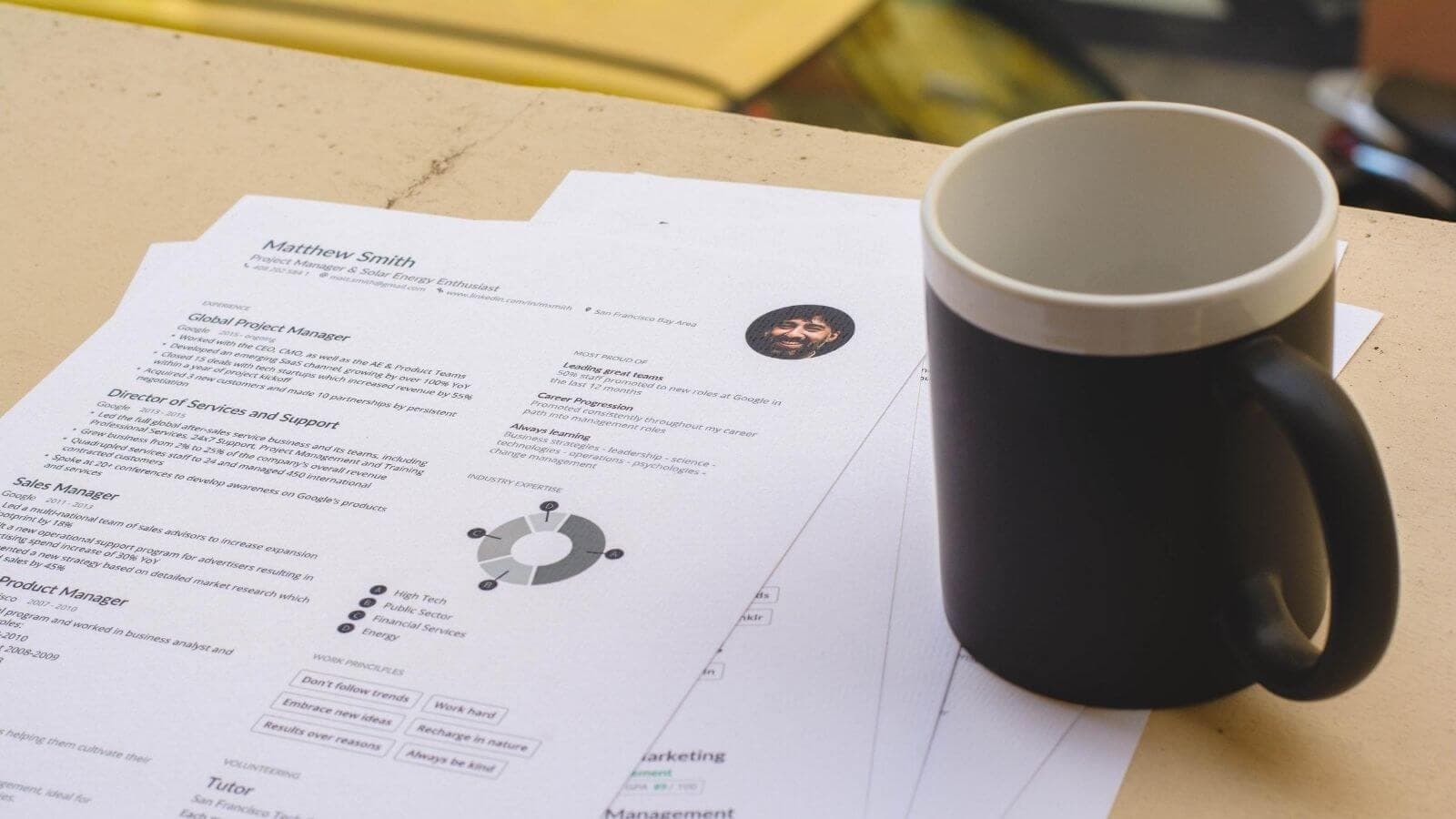Any MBA candidate needs a strong resume as a part of their application. Your Resume can play a crucial role in presenting your accomplishments, talents, and potential given the competitiveness of MBA schools and the need to stand out among a sea of eligible applicants.
Spending insufficient time on your resume is one of the biggest blunders you can make while submitting an MBA application. Despite the fact that the admissions committee won’t spend much time reading the complete resume, you must accurately and concisely emphasise every important section. Remember, the person or group conducting your interview may use your resume as a guide to decide whether to move on to the next step of the application process.
Therefore, it’s crucial to avoid just including your Resume that you would use when applying for a job. Make sure to update it and customise it for your unique MBA program.
We’ll go into five key suggestions in this post to assist you in writing an MBA resume that catches the attention of admissions committees and makes a lasting impression.

Difference Between a Degree Resume and a Job Resume
So, you might be wondering if your MBA resume is just a fancy version of your regular job resume. Well, the truth is, they’re not quite the same.
Think about it this way: a job resume is like a road map that guides employers to see how your skills match the job they’re offering. It’s all about showing how you fit into a specific role and can handle certain tasks.
On the other hand, an MBA resume is more like a spotlight on your potential to make waves in the business world. It’s not just about listing your past roles and duties. It’s about showcasing the impact you’ve had and the value you bring to the table.
When you’re applying for an MBA, the admissions committee wants to see your leadership skills, your ability to think outside the box, and how you can work wonders with a team. They’re interested in your big ideas and how you’re going to shape the future of business.
So, remember, your MBA resume isn’t just a list of jobs. It’s a story of your journey so far and a glimpse into the exciting things you’re going to do. Keep that in mind while you’re putting it together.

5 Ways To Structure A Resume For MBA
Below is a list of 5 essential tips to create an MBA Resume:
1. Highlight Relevant Professional Experience
It’s crucial to highlight your professional achievements and experiences that clearly correspond to your MBA ambitions while writing an MBA resume. Include information on your leadership roles, noteworthy projects, and accomplishments that show off your capacity for collaboration, leadership, and making a difference inside an organisation. Wherever possible, quantify your accomplishments with precise figures, percentages, or metrics to highlight your contributions.
Put a focus on your professional experience that clearly relates to your MBA objectives. Roles that demonstrate leadership, project management, problem-solving, and teamwork may fall under this category. In order to give context and illustrate your impact, quantify your accomplishments. Instead of just writing “Managed a team,” you may say, “Led a cross-functional team of 10 members, resulting in a 20% increase in project efficiency within six months.”
2. Showcase Leadership Skills and Extracurricular Activities
Along with academic brilliance, MBA schools also search for people with significant leadership potential and a diverse set of skills. Include information on any leadership positions held in clubs, organisations, or neighbourhood projects. Describe your duties, the results, and how these experiences have helped you hone skills like teamwork, communication, and problem-solving that are important to your MBA path.
Candidates for MBA programs are valued for their academic prowess as well as for their demonstrated leadership abilities. Include positions of leadership in clubs, organisations for students, and volunteer work. Describe your duties and the ways in which you helped the group succeed. Give examples of when you worked well with people, handled conflicts, and had the capacity to inspire and influence others.
3. Customize Your Resume for Each Program
When writing your MBA resume, avoid using a one-size-fits-all approach. You should research the programs you are applying to and tailor your resume to fit their particular strengths, values, and curriculum. Customising your resume, demonstrates your sincere interest in the course and how you might benefit from its distinctive community. Emphasise the programs, professors, or resources that really interest you.
A generic resume should not be used for all MBA applications. Look at the particular strengths, values, and offerings of each program. Include words and events from your past that are pertinent to the program’s requirements. If a program places a strong emphasis on entrepreneurship, be sure to mention any startup experience or entrepreneurship-related curriculum. This particular strategy displays your suitability for the program and sincere interest.

4. Demonstrate Quantitative and Analytical Skills
Analytical and mathematical skills are highly valued in MBA programs. Be sure to highlight your expertise in these areas in your Resume. The coursework, projects, or employment highlights that pertain to data analysis, financial modelling, or strategic decision-making should be highlighted. In addition to showcasing your abilities, this will also show that you are prepared to take on the demanding academic rigours of an MBA program.
An excellent foundation in quantitative and analytical skills is necessary for MBA programs. Highlight relevant training, credentials, or work experiences that demonstrate your capacity to analyse data, come to educated conclusions, and resolve challenging situations. Give particular examples of your findings and insights if you’ve worked on projects including financial modelling, market research, or data analysis.
5. Craft a Compelling Summary and Format
The summary or objective statement on your resume is what admissions committees will read first. Make sure it’s succinct, memorable, and in line with your professional goals. Pay close attention to the layout and presentation of your resume as well. Use a readable, tidy, and professional layout. To draw attention to important material, use headings, bold fonts, and bullet points. Keep in mind that a well-organised, eye-catching Resume showcases your attention to detail.
The first sentence of your resume should be a succinct and compelling statement that sums up both your professional goals and your contributions to the MBA program. In this part, emphasise your qualifications, objectives, and distinctive qualities. Choose a neat and expert arrangement when it comes to formatting. Use headings to identify parts, bullet points to organise information, and strong type to emphasise important points. Admissions committees will have an easier time navigating a Resume that is organised and attractive to the eye.
Structuring Your Resume For MBA
Your relevant experiences and accomplishments must be organised strategically to create a successful MBA application Resume. A revised strategy is as follows:
Profile Header
Start with a formal header that includes your name, contact information, and, at your description, a link to your LinkedIn page.
Career Objective
Start with a brief career objective or synopsis that summarises your goals and how an MBA fits within those goals.
Educational Journey
A chronological summary of the schools you attended, the degrees you have earned, your majors, the dates of your graduations, and any notable academic accomplishments should be the first section of your resume.
Professional Timeline
Present your professional background in reverse chronological order. Give specific details about your job titles, employer names, lengths of employment, and, most crucially, the significance and responsibilities of your function.
Highlight Accomplishments
Highlight noteworthy accomplishments, such as honours, scholarships, awards, or any measurable successes that highlight your skills.
Leadership Positions
Be sure to highlight any leadership positions, extracurricular activities, club memberships, community service projects, or other endeavours that have shaped your character and growth.

Mention Your Skills
List your relevant skills, including any language proficiency, technical ability, and any unique qualities that make you stand out.
Projects and Initiatives
Explain your involvement and contributions to key initiatives you’ve worked on, especially those that pertain to your MBA objectives.
Mention Trainings and Courses
Showcase any training sessions, certificates, or courses that demonstrate your dedication to learning new skills and developing your career.
Inclusivity
By quickly discussing hobbies and interests that demonstrate your well-rounded character, you can provide the reader a window into your personality.
Additional Work
Include areas that highlight your breadth of knowledge and specialised experience, such as Research, Publications, Languages, or Conferences, if appropriate.
Aesthetic Appeal
Ensure a visually pleasing layout with bullet points, a consistent font, and adequate spacing for simple reading.
Make sure the ethos and ideals of the MBA school are reflected in your resume. Create an unique narrative (usually no longer than one page) that skillfully highlights your accomplishments, leadership development, and future influence. Your resume should be a compelling narrative of your experiences and your capacity to succeed in the MBA environment.
Conclusion
A thorough strategy and close attention to detail are necessary when creating an MBA resume that stands out. You can make a Resume that persuasively conveys your potential as an MBA applicant by putting an emphasis on your pertinent experiences, leadership traits, targeted content, quantitative skills, and presentation.
Your resume is a snapshot of your accomplishments and abilities. With these five suggestions, you’ll be well on your way to leaving an impression on the admissions committees of your desired MBA programs.





